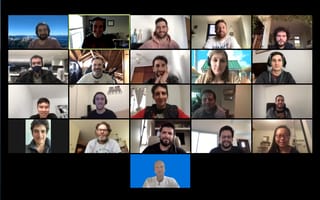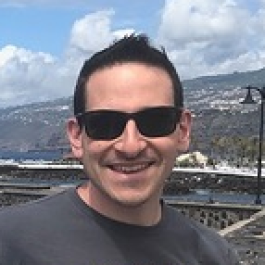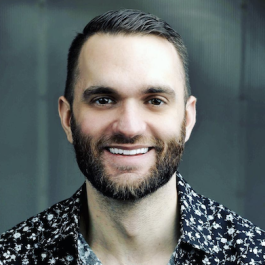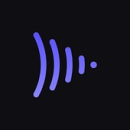
While sync-ups can foster collaboration among teams, they can also run the risk of being ineffective. For engineering teams, it is especially important for these meetings to be as productive as possible. That’s why it’s essential for engineering managers to create a set of strategies when it comes to running effective sync-ups.
While engineering teams all have their own sync-up style, there are various steps leaders can take to get the most out of these frequent team huddles. While some find it more productive to have more sync discussions through a platform like Slack, others prefer the personal connection that comes with video calls. Regardless of the approach taken, leaders should focus on running sync-ups that are productive, timely and engaging.
While most teams continue to work remotely, the need for closer collaboration is greater than ever. For leaders, this means making sure sync-ups remain constructive while helping team members feel connected, no matter where they are.
Built in NYC caught up with five tech leaders from across the city to learn how they've made remote sync-ups more effective.
Becoming a parent is a huge financial responsibility. Fabric wants to make things easier for parents. Through their app, parents can organize their family’s important financial and legal information — all in one place.
Engineering Manager Scotty Eckenthal described the benefits of asynchronous discussion and how his team brings joy into everyday sync-ups.
What does a typical sync-up look like for your team, and how do you structure those meetings to ensure they're as productive as possible?
We run a daily standup Monday through Friday with a fairly typical format that consists of updates, intentions and blockers, all pertaining to our team’s weekly goals and quarterly OKRs. We maintain a meeting log in which we note any necessary follow-up discussions. Prior to going remote, we would then break and allow folks to continue their day, expecting that discussion would occur when the opportunity arose naturally in the office. Now, we transition directly into the “parking lot,” which serves as both a structured discussion with agenda items logged during standup and an opportunity for free flow conversation, similar to what we might have experienced walking back to our desks at this time last year. The approach to the parking lot has evolved organically in the remote world and allows us to solve problems efficiently and creatively. Members of our team can rely on that time for sync discussion with their teammates.
What's one thing you've done to improve the effectiveness of your stand-up meetings? What were the results?
While our parking lot is incredibly valuable, we found that, given its lack of structure, it was very easy to lose focus and efficiency in that time when conversation wandered. Several of our team members surfaced this in a retro, and we decided to subscribe (aggressively at first) to an “async-first” philosophy that prefers discussion in Slack over sync discussion in a meeting. We’ve since deliberately identified items in the parking lot that we could try to handle asynchronously, increasing the efficiency of the discussion. We then have those conversations in Slack, which memorializes the discussion for archival purposes and makes for easier transitions into whatever they materialize, such as Jira tickets and RFCs. If we find that async discussion isn’t working for a particular topic, we’ll find the time to discuss synchronously and then return to the Slack thread with the outcome to maintain the pattern.
It is extremely important to our team that everyone knows what we’re trying to accomplish, why it will drive results for the business and how we intend to get there. We’re currently in the middle of a quarterly planning period, during which time teams score OKRs from the previous quarter and define OKRs for the upcoming quarter, and we’re prioritizing the visibility and measurability of our team’s progress toward these goals. In addition to these tactics, we’re identifying metrics we can use to chart our progress over the course of the quarter and designing an analytics dashboard to manifest that progress visually. We hope to use this dashboard in our regular Agile planning meetings, including standups, to make sure we’re on the right track.
We found that if we didn’t bend our rules a little bit, we’d lose track of who we were as people.”
What's one strategy you've found to be critical for keeping employees engaged throughout these meetings?
When we went remote, we deliberately shifted from “starting immediately on time” to taking the first few minutes of our daily standup to catch up together organically. This sort of discussion would occur naturally in our office, but we found that if we didn’t bend our rules a little bit, we’d lose track of who we were as people, which in turn would inhibit our ability to work together effectively.
Fun is essential for me in a work environment. In fact, members of the team joke that my management style is “camp counselor,” and they’re not that far off base. Joy is one of Fabric’s core values, so I’m really thankful to be around folks who feel similarly and not only tolerate my antics but feed back into them. I can’t say that we do anything specific other than prioritize each other’s needs as human beings during this time, but it has certainly paid off. For one thing, it makes for an easy and deliberate transition when the time comes to focus, but for another, it brings our team together. Since we started, the group has naturally expanded, as key subject matter experts and contributors outside of our immediate team wanted in on the fun. As a result, that larger group has more opportunities to connect and cross-pollinate as we work together toward our larger goals.
Traditional ID documents can be a hassle. That’s why CLEAR has developed biometrics screening technology that registers people’s eyes and face to confirm their identity. CLEAR’s touchless ID is currently being used at airports, sports stadiums and other high-density locations.
Engineering Manager Dave Proskin shared how he helps his team members feel connected during sync-ups and why they rely on “posts” to make meetings more efficient.
What does a typical sync-up look like for your team, and how do you structure those meetings to ensure they're as productive as possible?
Our standups have two goals: bring the team together face to face, which in the current climate is more important than ever, and ensure that anything blocking the team from making progress is identified quickly. One thing we do that helps the team feel connected is ask everyone to put their cameras on if they are comfortable doing so. Seeing other team members' faces (and sometimes fun virtual backgrounds) goes a long way and helps increase engagement during the call.
We have a designated team member — in our case, our program manager — who runs the meeting and calls on each team member for their update. We try to keep the discussion focused on the speaker’s tickets so we’re staying focused on delivering the objectives in front of us. Finally, any topic that is going to consume more time is handled via a “post” at the end to let anyone who doesn’t need to join that discussion drop off and get on with their day.
What's one thing you've done to improve the effectiveness of your stand-up meetings? What were the results?
Having a designated team member who runs the meeting and calls on each member definitely speeds up the flow of the meeting and makes sure no one gets skipped. Before we did that, it was a guessing game on who should speak next and who had already gone, with lots of awkward pauses. Even with our growing mobile team at CLEAR, we’re still able to get through the daily standup in around 15 to 20 minutes most days.
I’ve found that, in general, meetings are only repetitive or boring for team members when they feel they’re not relevant.”
What's one strategy you've found to be critical for keeping employees engaged throughout these meetings?
In the current climate, there’s sometimes a feeling of meeting overload. While we could have more casual conversations together in an office before, now we have to make time in our schedule to ensure things are effectively communicated. But as fewer and fewer teams operate in a truly collocated fashion, developing the skills to run a distributed team is critical.
I’ve found that, in general, meetings are only repetitive or boring for team members when they feel they’re not relevant. During our standups, there’s nearly always some question raised, context that someone is sharing or a call for help from one team member to another, which helps contribute to the feeling that it’s important to join the standup. Oftentimes, we iron out critical details during our posts, which help ensure we’re not bouncing too much back and forth in Slack. Variety is definitely useful. Every now and then, we inject a fun topic that we ask each member to address, such as what their favorite flavor of coffee is (and don’t you dare say you don’t drink coffee).
For e-commerce businesses, offering product protection to customers is a top priority. Mulberry Technology wants to make this easier. Using APIs and AI, the company helps businesses create personalized product protection solutions that unlock additional revenue and increase brand loyalty.
Chief Technology Officer Lee Johnson told us why they decided to split each sync-up into a series of smaller meetings and what they’ve done to keep them more focused.
What does a typical sync-up look like for your team, and how do you structure those meetings to ensure they're as productive as possible?
We have daily standups here at Mulberry. Since we’re remote, we’ll typically gather on a Google Hangout at 10:30 a.m. You’ll often see at least one front-end and back-end engineer, a product manager, a product designer and a data scientist on the call. We’ll each talk a bit about current statuses on ongoing projects, then we’ll shift to what’s next on the docket for us. It’s also a good time to raise any complicated issues or dependencies we’re facing. A different person on the team kicks the meeting off each day, and each participant chooses who speaks next.
What's one thing you've done to improve the effectiveness of your stand-up meetings? What were the results?
We recently split up our monolithic team standup into a series of smaller standups, which own specific areas of the product. This has been incredibly impactful and has fostered a stronger sense of ownership, innovation, productivity and quality amongst the smaller teams.
Our standups have become much more relevant to everyone involved, which has significantly boosted engagement and team communication overall.”
What's one strategy you've found to be critical for keeping employees engaged throughout these meetings?
Now that everyone is working within set pods on a specific segment of the product, our standups have become much more relevant to everyone involved, which has significantly boosted engagement and team communication overall. Additionally, we’ve done a much better job at moving more in-depth, tactical discussions that arise into “offline,” separate meetings to keep our standups more focused and efficient.
For creative teams, keeping videos, images and other assets in one place is important. That’s why Frame.io has created a platform that helps them do just that. Through their collaborative platform, teams can view feedback, illustrate their ideas and get comments and approvals in real time — from anywhere in the world.
Engineering Manager Michael Angelo discussed why his team cut their sync-up meeting times in half and how each team member gets the chance to take ownership of sync-ups.
What does a typical sync-up look like for your team, and how do you structure those meetings to ensure they're as productive as possible?
Our typical sync-up is our daily standup, which includes product, design and engineering. It is a time for the team to share, specifically, what they did yesterday, what they are working on today and if they have any blockers. The goal is simple: We want our teammates to be updated on current work and potential concerns, all while enhancing communication and visibility.
What's one thing you've done to improve the effectiveness of your stand-up meetings? What were the results?
Within the last six months, we’ve cut our daily standup time in half from 30 to 15 minutes. This was made possible after we introduced a concept of post items. Essentially, anything that will take longer than 30 seconds to explain or may need deeper discussion is set aside for after the meeting. This allows for an efficient standup and deeper discussion with the necessary people rather than the whole group.
We want our teammates to be updated on current work and potential concerns, all while enhancing communication and visibility.”
What's one strategy you've found to be critical for keeping employees engaged throughout these meetings?
Our team stays involved and engaged by taking turns running our sprint ceremonies, which includes standup, backlog grooming, sprint planning and retro. We all have different personalities, and we want everyone to take ownership and have opportunities for how our team operates. The rotation allows for the team to experience different people at the helm with a variety of viewpoints.
Many wealth management firms lack the tools needed to maintain a competitive edge. In response to this need for improvement, Addepar offers a platform that helps firms consolidate and unify all their data, so they can easily analyze any portfolio and provide clients with a more complete financial picture.
Director of Engineering Trevor Caira shared why he keeps his team sync-ups concise and information-dense.
What does a typical sync-up look like for your team, and how do you structure those meetings to ensure they're as productive as possible?
We run two daily video standups on each coast. The format mirrors an in-person standup meeting. Each update consists of yesterday's progress, today's plans and any blockers. We close out the session with any announcements I might have for the team. In a post-pandemic world, this daily information flow is essential to keeping the team updated on what's going on in the company.
What's one thing you've done to improve the effectiveness of your stand-up meetings? What were the results?
The single thing I've done to improve our standups' efficacy is to focus on the core agenda of updates, plans and blockers. As a result, our standups end on time and are more relevant to the group, and some meetings are pushed offline for related conversations.
We like to keep our stand-up meetings concise and information dense, which staves off some of the repetition.”
What's one strategy you've found to be critical for keeping employees engaged throughout these meetings?
We like to keep our stand-up meetings concise and information dense, which staves off some of the repetition. While most of our time in sync-up meetings is spent in standup, we have managed to make the majority of our team's process asynchronous to mitigate the ceremony and repetition of otherwise formulaic meetings.















